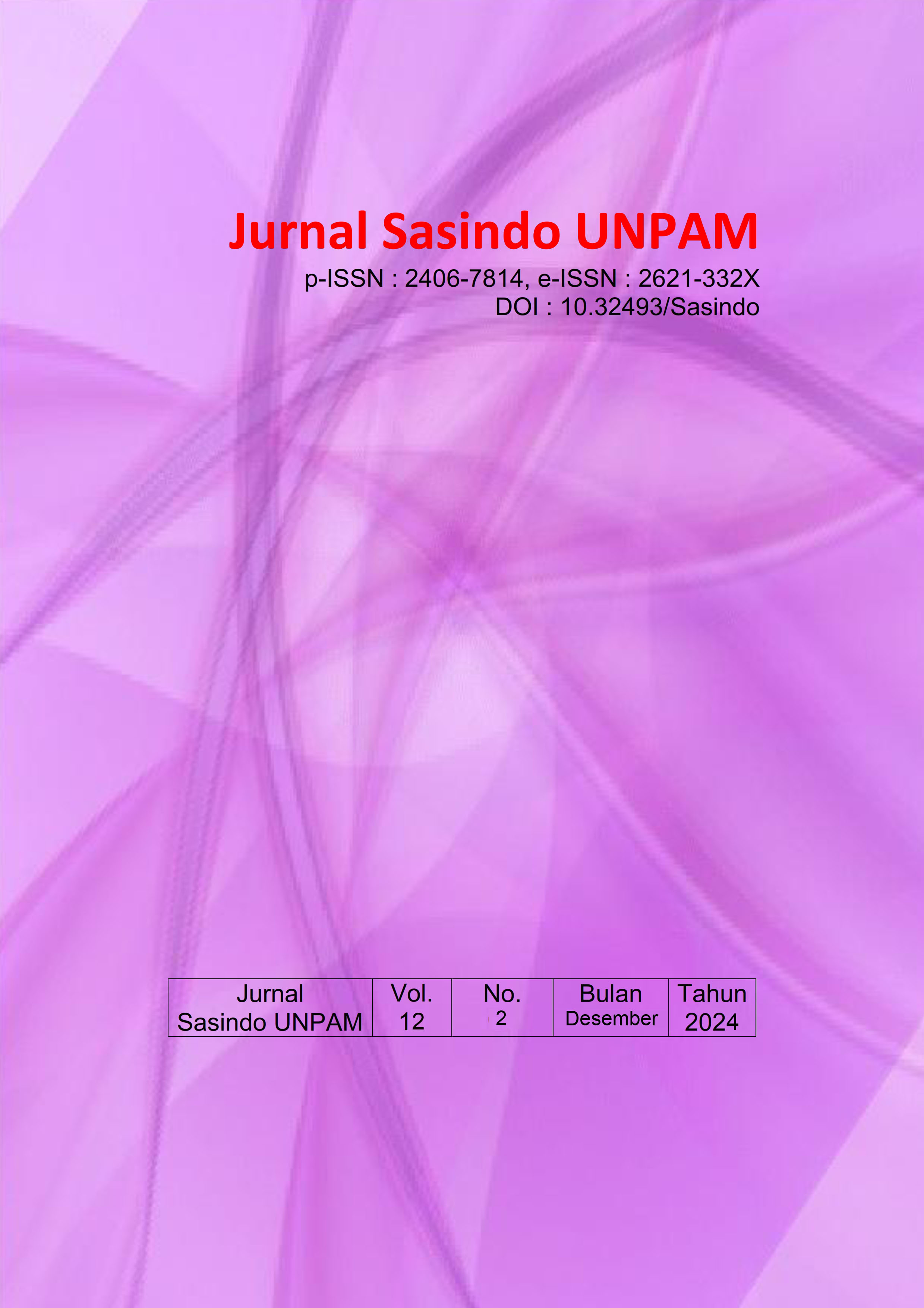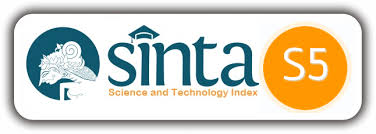How Have We Approached Teaching Our Son To Read English?: An Autoethnography
DOI:
https://doi.org/10.32493/sasindo.v12i2.1-12Keywords:
literacy acquisition, reading development, reading English, autoethnography research, early years, foreign languageAbstract
This autoethnographic study explores the process of teaching English reading to a young child, starting at the age of two, in a non-native English-speaking family. The study aims to understand the nuances and effects of early literacy interventions, highlighting the importance of systematic instruction in phonemic awareness, phonics, fluency, vocabulary, and comprehension strategies. Through detailed personal experiences, the study illustrates the progression of learning stages from alphabet recognition to the development of sight word recognition and orthographic mapping. By integrating education theories with longitudinal personal experiences, this study provides insights into effective teaching practices and child-centered learning approaches that can significantly influence early literacy development. The findings suggest that early, structured reading education is critical in fostering reading proficiency, offering a blueprint for parents and teachers in similar educational settings.
References
Abdullah, A., Noni, N., Basri, M., & Djirong, A. (2023). An Auto Ethnographic Study on Communicative Approach in Teaching English Syntax in a University Context. International Journal of Language Education, 7(1), 46-57. https://doi.org/10.26858/ijole.v1i1.36457
Adams, M. J. (1990). Beginning to read: Thinking and learning about print. MIT Press.
Adams, T. E. (2015). Narrative transitions: Exploring experiences of change through autoethnography. Qualitative Inquiry, 21(3), 228-237. https://doi.org/10.1177/1077800414553647
Adams, T. E., Ellis, C., & Holman Jones, S. (2017). Autoethnography. The International
Encyclopedia of Communication Research Methods, 1–11.
Adams, T. E., Holman Jones, S., & Ellis, C. (2015). Autoethnography: Understanding
qualitative research. Oxford University Press.
Alm, A., & Ohashi, L. (2020). From self-study to studying the self: a collaborative autoethnography of language educators as informal language learners. In K.-M. Frederiksen, S. Larsen, L. Bradley & S. Thouësny (Eds), CALL for widening participation: short papers from EUROCALL 2020 (pp. 1-6). Research-publishing.net. https://doi.org/10.14705/Rpnet.2020.48.1156
Anderson, L. (2006). Analytic Autoethnography. Journal of Contemporary Ethnography, 35(4), 373-395.
Baker, S.K., Santiago, R.T., Masser, J., Nelson, N.J., & Turtura, J. (2018). The alphabetic principle: From phonological awareness to reading words. U.S. Department of Education, Office of Elementary and Secondary Education, Office of Special Education Programs, National Center on Improving Literacy. Retrieved from http://improvingliteracy.org
Ball, E. W., & Blachman, B. A. (1991). Does Phoneme Awareness Training in Kindergarten Make a Difference in Early Word Recognition and Developmental Spelling? Reading Research Quarterly, 26, 49-66. http://dx.doi.org/10.1598/RRQ.26.1.3
Barkhuizen, G., & Wette, R. (2008). Narrative frames for investigating the experiences of language teachers. System, 36, 372-387
Beech, J. (2005). Ehri's model of phases of learning to read: A brief critique. Journal of Research in Reading, 28(1), 50-58.
Besio, K. (2020). Autoethnography. International Encyclopedia of Human Geography, 243-247.
Blackwell, R., & Laman, S. (2013). Strategies to teach sight words in an elementary classroom. International Journal of Education, 5(4), 37-47.
Bochner, A. P. (2000). Criteria against ourselves. Qualitative Inquiry, 6(2), 266-272. https://doi.org/10.1177/107780040000600209
Brown, K., & Lee, C. (2019). Alphabet instruction and its impact on reading achievement in early elementary school. Reading Psychology, 40(5), 430-448.
Chall, J. S. (1983). Stages of Reading Development. McGraw-Hill.
Byrne, B., & Fielding-Barnsley, R. (1989). Phonemic awareness and letter knowledge in the child’s acquisition of the alphabetic principle. Journal of Educational Psychology, 81, 313-321. http://psycnet.apa.org/doi/10.1037/0022-0663.81.3.313
Byrne, B., & Fielding-Barnsley, R. (1990). Acquiring the alphabetic principle: A case for teaching recognition of phoneme identity. Journal of Educational Psychology, 82, 805-812. http://psycnet.apa.org/doi/10.1037/0022-0663.82.4.805
Clandinin, D. J., & Connelly, F. M. (2000). Narrative in-quiry: Experience and story inqualitative research. San Francisco, CA: Jossey-Bass.
Clark, C. & Gruba, P. (2010). The use of social networking sites for foreign language
learning: An autoethnographic study of Livemocha. In C.H. Steel, M.J. Keppell, P. Gerbic & S. Housego (Eds.), Curriculum, technology & transformation for an unknown future. Proceedings ascilite Sydney 2010 (pp.164-173). http://ascilite.org.au/conferences/sydney10/procs/Cclark-full.pdf
Dehaene, S. (2009). Reading in the brain: The new science of how we read. Penguin Books.
Dickinson, D. K., & Porche, M. V. (2011). Relation between language experiences in preschool classrooms and children's kindergarten and fourth-grade language and reading abilities. Child Development, 82(3), 870-886.
Długosz, D. (2000). Rethinking the role of reading in teaching a foreign language to young learners. ELT Journal, 54(3), 284-290.
Doe, J., & Johnson, A. (2018). The role of alphabet knowledge in early reading development. Journal of Literacy Research, 45(2), 123-145.
Duke, N. K., & Pearson, P. D. (2002). "Effective practices for developing reading comprehension." In A. E. Farstrup & S. J. Samuels (Eds.), What research has to say about reading instruction (3rd ed., pp. 205-242). International Reading Association.
Ehri, L. C. (1987). Learning to Read and Spell Words. Journal of Reading Behavior, 19(1), 5-31. https://doi.org/10.1080/10862968709547585
Ehri, L. C. (1998). "Grapheme-phoneme knowledge is essential for learning to read words in English." In Word recognition in beginning literacy (pp. 3-40). Lawrence Erlbaum Associates Publishers.
Ehri, L. C., & McCormick, S. (1998). Phases of word learning: Implications for instruction with delayed and disabled readers. Reading & Writing Quarterly, 14, 135-163.
Ehri, L. (2005). Alphabetics instruction helps students learn to read. In R. M. Joshi & P. G. Aaron (Eds.), Handbook of orthography and literacy (pp. 649-678). Routledge.
Ehri, L. (2014). Orthographic Mapping in the Acquisition of Sight Word Reading, Spelling Memory, and Vocabulary Learning. Scientific Studies of Reading, 18(1), 21-5.
Ehri, L. C., Nunes, S. R., Stahl, S. A., & Willows, D. M. (2001). Systematic phonics instruction helps students learn to read: Evidence from the National Reading Panel's meta-analysis. Review of Educational Research, 71(3), 393-447. https://doi.org/10.3102/00346543071003393
Ellis, C., Adams, T. E., & Bochner, A. P. (2011). Autoethnography: An overview. Forum: Qualitative Social Research, 12(1), Art. 10. https://doi.org/10.17169/fqs-12.1.1589
Ellis, C., Adams, T. E., & Bochner, A. P. (2010). Autoethnography: An Overview. Historical Social Research, 12, 273-290.
Ellis, C., & Bochner, A. P. (2006). Analysing analytic autoethnography: An autopsy.
Journal of Contemporary Ethnography, 35(4), 429–449.
Foulin, J.N. (2005). Why is letter-name knowledge such a good predictor of learning to read? Reading and Writing, 18, 129-155. doi:10.1007/s11145-004-5892-2
Hansen, K. Y., & Gustafsson, J.-E. (Eds.). (2016). Nordic childhoods and early education: Philosophy, research, policy, and practice in Denmark, Finland, Iceland, Norway, and Sweden. Information Age Publishing.
Hakuta, K., Bialystok, E., & Wiley, E. (2003). Critical evidence: A test of the critical-period hypothesis for second-language acquisition. Psychological Science, 14(1), 31-38. https://doi.org/10.1111/1467-9280.01415
Hawkins, M. M. (2018). An auto-ethnographic study of foreign and native language education in the United States of America, the Dominican Republic, and Spain. Senior Honors Projects, 2010-current. 515. https://commons.lib.jmu.edu/honors201019/515
Hill, C., E. & Knox, S. (2021). Essentials of Consensual Qualitative Research. American Psychological Association
James, K, H. & Berninger, V, W. (2021). The neural correlates of handwriting and its effect on reading acquisition. Indiana University: Zaner-Bloser.
James, K, H. & Engelhardt, L. (2012). The effects of handwriting experience on functional brain development in pre-literate children. Trends in Neuroscience and Education, 1(1), 32-42. https://doi.org/10.1016/j.tine.2012.08.001.
Jingga, J. (2022). Teaching English Language in Early Childhood. Journal of Applied Linguistics.
Kilpatrick, D. A. (2015). Essentials of assessing, preventing, and overcoming reading difficulties. John Wiley & Sons.
Liberman, A. M., & Mattingly, I. G. (1985). The motor theory of speech perception revised. Cognition, 21(1), 1-36. https://doi.org/10.1016/0010-0277(85)90021-6
McBride-Chang, C. (1999). The ABCs of the ABCs: The development of letter-name and letter-sound knowledge. Merrill-Palmer Quarterly, 45, 285-308. https://www.jstor.org/stable/23093679
McGuinness, D. (2004). Early reading instruction: What science really tells us about how to teach reading. MIT Press.
Méndez , M. G. (2012). The emotional experience of learning English as a foreign language: Mexican ELT students’ voices on motivation. México, DF: La Editorial Manda.
Méndez, M. G. (2013). Autoethnography as a research method: Advantages, limitations and criticisms.
Méndez, M. G., & Peña, A. (2013). Emotions as learning enhancers of foreign language learning motivation. PROFILE Journal, 15, 109-124.
Moats, L. C. (2010). Speech to print: Language essentials for teachers. Paul H. Brookes Publishing Co.
Nation, I.S.P. (2013). Learning Vocabulary in Another Language. Cambridge University Press.
National Early Literacy Panel. (2008). Developing early literacy: Report of the National Early Literacy Panel. National Institute for Literacy.
National Reading Panel. (2000). Teaching children to read: An evidence-based assessment of the scientific research literature on reading and its implications for reading instruction (NIH Publication No. 00-4769). National Institute of Child Health and Human Development.
PISA 2022 Database. (2022). Comparing countries’ and economies’ performance in reading. Vol.I. The Organization for Economic Cooperation and Development. https://www.oecd.org
Radvansky, G. A., Gibson, B. S., & McNerney, M. W. (2011). Synesthesia and memory: Color congruency, von Restorff, and false memory effects. Journal of Experimental Psychology: Learning, Memory, and Cognition, 37(1), 219-229.
Rayner, K., Foorman, B. R., Perfetti, C. A., Pesetsky, D., & Seidenberg, M. S. (2001). How psychological science informs the teaching of reading. Psychological Science in the Public Interest, 2(2), 31-74. https://doi.org/10.1111/1529-1006.00004
Roberts, T., A., Vadasy, P., F., & Sanders, E., A. (2019). Preschoolers’ alphabet learning: Cognitive, teaching sequence and English proficiency. Reading Research Quarterly, 54(3), 413-437. https://doi.org/10.1002/rrq.242
Sahlberg, P. (2011). Finnish lessons: What can the world learn from educational change in Finland? Teachers College Press.
Share, D. L. (1995). Phonological recoding and self-teaching: Sine qua non of reading acquisition. Cognition, 55(2), 151-218.
Snow, C.E., Burns, M.S., & Griffin, P. (Eds.). (1998). Preventing reading difficulties in young children. National Academy Press.
Snowling, M. J., & Hulme, C. (2011). Evidence-based interventions for reading and language difficulties: Creating a virtuous circle. British Journal of Educational Psychology, 81(1), 1-23.
Smith, A., & Johnson, B. (2018). The benefits of music education for children. Journal of Educational Psychology, 110(2), 212-225.
Strange, W., & Dittmann, S. (2015). Effects of training on the perception and production of second language speech sounds. In B. Hammarberg (Ed.), Advances in the study of bilingualism (pp. 149-172). Multilingual Matters. DOI: 10.21832/9781783091716-009
Taylor, B., C., Barley, W., C., Brummans, B., H., J., M., Ellingson, L., L., Ganesh, S., Herrmann, A., F., Rice, R., M., & Tracy, S., J. (2021). Revisit ethnography in organizational communication studies. Management Communication Quarterly, 35(4), 623-652. https://doi.org/10.1177/08933189211026700
Treiman, R. (2005). Knowledge about letters as a foundation for reading and spelling. In R. M. Joshi & P. G. Aaron (Eds.), Handbook of orthography and literacy (pp. 581-600). Routledge.
Vygotsky, L. S. (1978). Mind in society: The development of higher psychological processes. Harvard University Press.
Wall, S. (2006). An Autoethnography on Learning About Autoethnography. International Journal of Qualitative Methods, 5(2), 146-160.
Wasik, B. A., & Bond, M. A. (2001). Beyond the pages of a book: Interactive book reading and language development in preschool classrooms. Journal of Educational Psychology, 93(2), 243-250.
Whitehurst, G. J., & Lonigan, C. J. (1998). Child development and emergent literacy. Child Development, 69(3), 848-872. https://doi.org/10.1111/j.1467-8624.1998.tb06247.x
Downloads
Published
How to Cite
Issue
Section
License
Authors who publish with this journal agree to the following terms:
- Authors retain copyright and grant the journal right of first publication with the work simultaneously licensed under a Creative Commons Attribution License that allows others to share the work with an acknowledgement of the work's authorship and initial publication in this journal.
- Authors are able to enter into separate, additional contractual arrangements for the non-exclusive distribution of the journal's published version of the work (e.g., post it to an institutional repository or publish it in a book), with an acknowledgement of its initial publication in this journal.
- Authors are permitted and encouraged to post their work online (e.g., in institutional repositories or on their website) prior to and during the submission process, as it can lead to productive exchanges, as well as earlier and greater citation of published work.

















